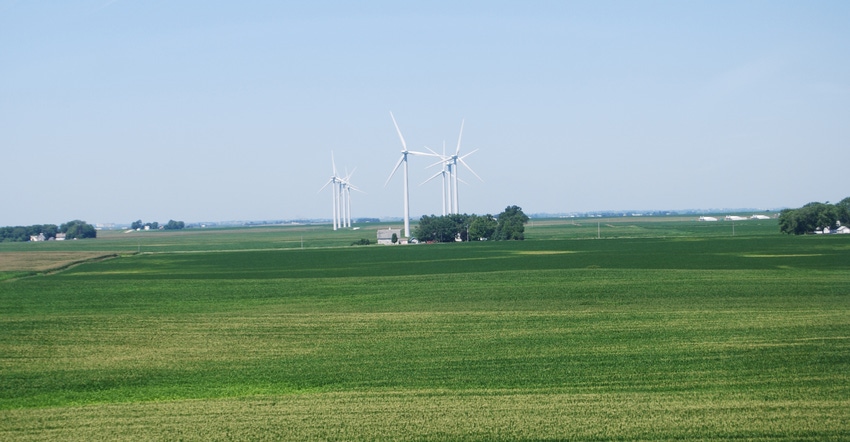April 30, 2020

Wind is now the largest single source of electrical energy in Iowa, providing 42% of the state’s total electricity generation. That’s more than any other state. According to the recently released Wind Powers America 2019 annual report, Iowa is generating more than 10,200 megawatts of wind energy per year. The report is compiled by the American Wind Energy Association.
Wind energy became the leading source of electricity in both Iowa and Kansas last year, making them the first states to reach that benchmark. Previously, coal-fired power generation had been Iowa’s main source of electricity. The report says Iowa projects added the second most wind power generating capacity last year, behind only Texas, as more wind farms are being built.
Revenue for communities
Iowa is second in the nation in total wind industry jobs, with more than 9,000. Iowa’s total economic investment in wind energy grew by $3 billion to reach $19 billion, also second in the nation behind Texas. Iowa remains a national leader in manufacturing of wind turbines and related products in the wind energy supply chain. Wind energy generated $61 million in annual state and local tax revenue that supports communities. The report says land lease payments across Iowa reached $69 million in 2019, providing a stable source of income for farmers and other landowners.
The rapid expansion of wind farms on the landscape continues to bring complaints by some Iowans who live nearby, although researchers say there’s little evidence of health impacts. The complaints are that turbines are loud and their lights at night are annoying, as is the flickering effect from sun shining across the rotating blades.
Some turbine neighbors say the spinning blades cause headaches, nausea and other health problems. Another criticism is that wind energy takes farmland out of production. Earlier this year, the Iowa Farm Bureau expressed concern about the loss of farmland and supported proposed regulations on where wind and solar farms can be built.
Another statewide group, Power Up Iowa, is a coalition of renewable energy supporters advocating for increased investments in wind energy. They reacted to the American Wind Energy Association report by citing the benefits at the local level that are critical in today’s economic environment.
Income for farmers, landowners
“Where wind energy is harnessed, economic progress follows,” says Bill Anderson, executive director of the Cherokee Area Economic Development Corp. in northwest Iowa. “In times of uncertainty, wind is a very valuable resource that communities rely on for sustainable energy and long-term revenue. In Cherokee County alone, wind development has resulted in $1.5 million in new annual property tax revenue, $500,000 of which has gone to our local school district. Expanding the development of this reliable, homegrown energy source in rural America will only become more critical in the future.”
Wind is not only powering Iowa’s communities and businesses, but also helping farmers who lease land to the wind energy companies. On average, a single wind turbine only takes about a half-acre out of crop production, says Ed Hatcher, a farmer from Montezuma who has wind turbines on his farm.
“Wind is unique because it’s impact extends across all sectors,” he says. “We all rely on energy to meet the daily needs of the economy. Not only is wind generating more energy than ever before, it’s doing so at a predictable low cost and attracting new investments in the economy. That brings benefits everywhere from our farms to companies with new technology. Wind energy is a green energy source we can all get behind.”
To read the report, visit U.S. Wind Industry annual market report.
Read more about:
CoalAbout the Author(s)
You May Also Like






